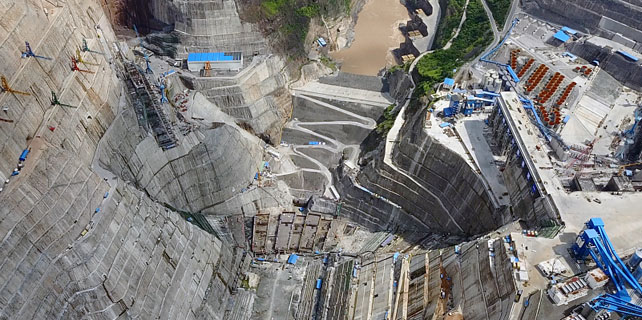H1 profits to boost banks' asset quality
 |
|
Customers fill out forms at a branch of China Merchants Bank in Haikou, Hainan province. [Photo by Zhang Mao/China Daily] |
Chinese banks' asset quality will likely improve as a profitable first half of the year will likely encourage corporate borrowers to repay loans, experts said.
Industrial companies' profit increased by 19.1 percent year-on-year in the January-June period, compared to single-digit growth in 2016 and a decline in 2015.
Banks' asset quality will improve also because of regulators' firm efforts to address the problem of overleveraged companies, according to a Moody's report.
Ratings agency Moody's Investors Service revised its outlook for China's banking system to "stable" from "negative" in late July, the first such upgrade since 2015.
Moody's said the revision reflects analysts' expectations that the ratio of non-performing loans of banks will be relatively stable, compared to a more rapid deterioration of asset quality in the past two years.
The average NPL-to-gross credit ratio declined to 1.74 percent in the first quarter from 1.76 percent in 2016 as the economy grew better than expected by 6.9 percent in the first quarter (as well as the second quarter) this year, according to China Banking Regulatory Commission data.
"An improved economy helps stabilize the overall delinquencies as companies' profit continued to recover in the first half," said Su Jian, an economics professor at Peking University.
Data from the Bank of International Settlements showed that China's corporate sector credit as a percentage of GDP increased only by 4 percentage points at the end of 2016 from a year ago.
That was a smaller increase compared to the 12 percentage-point growth in 2015.
But, at its mid-year meeting last weekend, the CBRC warned of a potential rise in the pressure of bad debts.
"The overall delinquencies will stabilize, but banks will still face relatively elevated asset risks due to high corporate leverage and delinquencies of some highly leveraged and loss-making borrowers," said Yulia Wan, an analyst with Moody's.
Some troubled borrowers might find it harder to repay loans due to tight liquidity as the People's Bank of China has changed its policy stance to prudent and neutral from prudent, according to Xu Chengyuan, chief analyst with Golden Oriental Credit Rating Company.
"There is no quick solution to the debt problem," said Xu. "Banks need to improve efficiency in dealing with bad assets, and consider debt-to-equity swaps and repackaging of debts."
To avoid risks piling up, banks should limit credit to sectors with overcapacity, while increasing financial support to emerging high-tech industries, said Zhao Qingming, chief economist at the research institute of the China Financial Futures Exchange.
As the economy continues to stabilize, bad debts will grow at slower pace, according to Zhao.
A report by China Orient Asset Management in July predicted the turning point for continued increase in bad debts will come in five years.
Bad debts fall in high-growth regions
Banks' bad debts ratio declined in the economically affluent regions that witnessed rapid growth in the past few years, while debt problems swelled in northeastern rust belt regions, according to statistics.
In the January-June period, bad loans over gross credit in Zhejiang province, which is regarded as the eastern business zone, dropped to 1.98 percent, down by 0.48 percent year-on-year, according to the latest data from the provincial banking regulatory bureau.
The ratio started to decline in 2016 from the high level of 2012.
In 2012, bankruptcies of a large number of small and medium-sized enterprises in Wenzhou, one of China's richest economic hubs, led to billions of yuan in bad debts for banks.
Starting from 2016, the China Banking Regulatory Commission rolled out measures to improve credit management and regulate enterprises' errant financial behavior.
The province's total amount of outstanding debts might continue to rise given SMEs' strong appetite for financing. But Zhejiang is on track to see a further decline in its bad debts ratio, according to a report by China Orient Asset Management in July.
Meanwhile, bad debt risks continue to increase in northeastern provinces, with many debt-laden traditional manufacturing enterprises grappling with restructuring.
By the end of June, the bad debt ratio in Heilongjiang province was 3.38 percent, and that of Liaoning province stood at 2.96 percent by the end of first quarter, latest data showed.
Data from China's 10 listed banks showed that by the end of 2016, outstanding non-performing loans of the manufacturing sector reached 300 billion yuan ($44.6 billion), topping the sectoral list that included retail.
Banks have to improve efficiency through measures such as credit rollovers in less developed regions, at a time when firms remain under intense credit pressure, said Jiang Yueming, a manager with China Orient Asset Management.






















